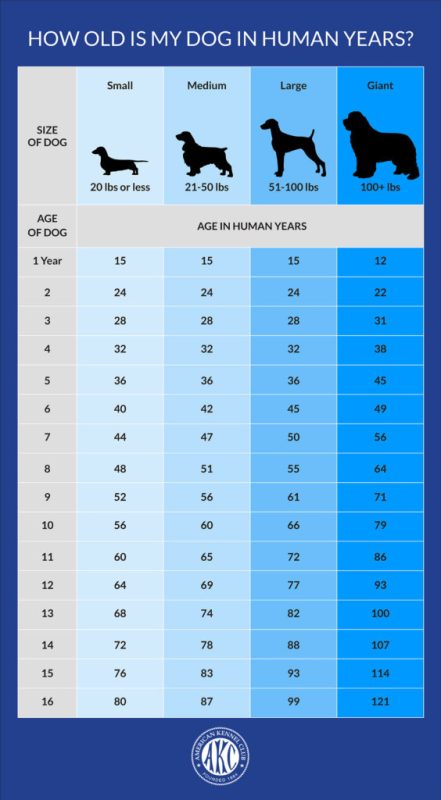
Conas aois madra a ríomh de réir caighdeáin daonna
Your pet goes through three stages in his life: puppyhood, adult dog and senior dog (for small and medium breeds of dogs, this stage of life begins after 7 years, for large and giant breeds – after 6 years). Puppies grow much faster than children and switch to solid food earlier – a dog can start eating dry food as early as 4 weeks of age. The comparison by teeth is also interesting: at the age of 20 days, puppies already have milk teeth, while in humans, teeth begin to cut only by 6 months. Permanent teeth in a dog are already formed by 7-8 months, and in humans, the process stretches for many years – up to about 18-24 years.
We use a new formula for calculations It used to be thought that one year of a dog’s life is equal to about seven years of a human’s life. But new research shows that this is not entirely true.
The most common way to calculate a dog’s age in human terms is by dividing the average lifespan of a human, 80 years, by the average lifespan of a dog, 12 years. It turns out an approximate figure of 7 years. Researchers from the University of California argue that this rule is wrong. The team conducted genetic studies on dogs and humans to understand how they age. It turned out that dogs initially mature and age much faster than humans, but over time the process levels off. The researchers combined all the processes into the following formula: current human age = 16 * ln (dog’s age) + 31. ln is the natural logarithm. According to this formula, a puppy that is 7 weeks old corresponds in its physical development to a nine-month-old baby.
Study of aging processes in the body To derive this formula, the research team analyzed 104 Labrador dogs. The study involved both tiny puppies and older dogs. In the process, the team compared a set of canine age-related changes in genes with human ones. It was concluded that the main changes occur in developmental genes, which is why the process levels off with age.
This study may contribute to the study of age-related diseases in dogs.
To determine the age of your pet in human terms, use the table. Up to one year, the calculations are approximate.
The researchers in their work also studied the genes of mice. It has been calculated that a mouse of two and a half years is approximately equal to nine years of a dog. This suggests that the formula can convert the age of many mammalian species.
Of course, all dogs develop in a similar way, despite breed differences. But researcher Matt Keiberlein of the University of Washington says it would be very interesting to see how age-related changes differ between dog breeds of different sizes and lifespans, such as Gearmáinis Danair Mhór and chihuahua.
long-lived dogs All registered breeds have different maximum ages. The longest-lived breeds are small dogs: Yorkshire Terriers, Chihuahuas, Pomeranians, Dachshunds, Toy Poodles, Lhasa Apso, Maltese, Beagles, Pugs and Miniature Schnauzers. However, a long-lived dog is considered to be a pet over 20 years old. In the Guinness Book of Records, a record is set – the Australian Shepherd Blueway lived for as long as 29 years. In second place is Butch the Beagle, who lived for 28 years, and the third place is shared between the Taffy Collie and the Border Collie Bramble with a life expectancy of 27 years.





